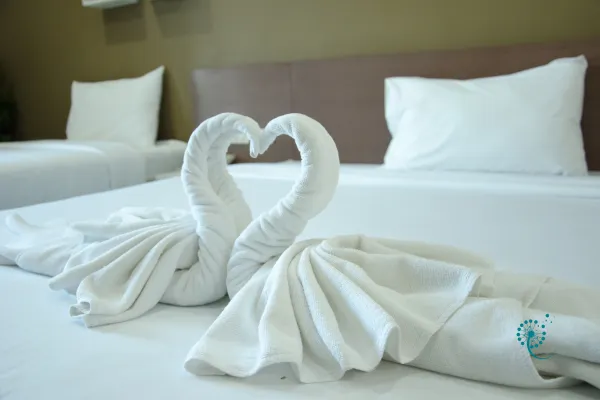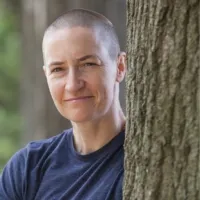Our Blog

Massage Therapy and HCAHPS
I have been advocating for the role of specially trained massage therapists in serious illness care for almost 20 years. Twenty years is a long time. Yet, I continue to hear decision-makers overstate the hypothesis that “massage therapy would probably improve Hospital Consumer Assessment of Healthcare Providers and Systems scores (HCAHPS).”
What they’re actually saying is, “Wouldn’t that be nice? ...if we gave patients a massage?” An additional clinical service provided by specially trained clinicians is the farthest thing from their minds. They want to offer patients a luxury hospitality gift. The human version of a fluffy towel folded into a swan.
When this is the thinking that inspires leaders to introduce massage therapy to patients, there’s not a chance that it will improve HCAHPS. Certainly, the hospital-based massage therapists I’ve met and trained are quite flexible, but we make crummy swans.
The HCAHPS is comprised of 21 questions within 10 categories that largely deal with issues specific to care and communication received from nurses or physicians and aspects of care like discharge planning and physical environment. None of these are things that would lead one to jump to the conclusion that massage therap could improve these measures, but that’s not actually why it’s not working.
First, we need to stop talking about what “massage” can do and start talking about what massage therapists can do. When people think about massage, they think about rubbing. “It hurts here. Rub it. It will feel better.” They think about lotion or oil, kneading, stroking, maybe range of motion. They may even have visions of a flower behind the ear of the recipient.
In their 2016 paper, Clarifying definitions for the massage therapy profession: the results of the Best Practices Symposium, Kennedy, et al address these hands-on aspects of massage therapy, but they go on to say:
“Massage therapy consists of the application of massage and non-hands-on components including health promotion and education messages for self-care and health maintenance; therapy as well as outcomes can be influenced by therapeutic relationships, communication, the therapist’s education, skill level, and experience as well as the therapeutic setting.”
This definition puts a fine point on the difference between massage/rubbing and massage therapy. "Massage" is this amorphous act of rubbing soft tissue with or without lotion, with or without training. "Massage therapy" is provided by a clinician who is also possessed of discipline-specific knowledge and skill, has the ability to engage in discipline-specific patient education and communication and is able to cultivate and leverage the value of therapeutic relationship to improve clinical outcomes, and yes, possibly satisfaction.
When massage therapists, hospital leaders, and palliative care clinicians contact Healwell for consultation about their massage therapy programs, they often tell me about undertrained, volunteer, very-part-time, non-integrated massage providers. The massage therapists providing care in their programs are “not allowed” to access the electronic medical records. These practitioners cannot chart their encounters, participate in rounds or benefit from any of the other collaborative aspects of care that inform the way that all other providers work with patients. Certainly, this is not true of all programs, but the majority believe they’re incorporating massage therapy when what they are really doing is maybe offering something like massage.
Circling back to the potential for massage therapists to impact HCAHP scores, we can scrap the ability of even the most well-integrated, well-trained massage therapist to impact the first three question areas which focus on the quality of nurse and physician communication and the alacrity with which issues are addressed. A well-trained massage therapist could possibly provide some effective service recovery when things go off the rails with other providers, but that teeters back into the “nice to have” perspective.
The fourth question is about how well patients’ pain is controlled. This is another area of deep misunderstanding and underestimation of the impact of massage therapists. Pain is a deeply complicated experience that is unlikely to be addressed by a single person in any medical setting. If you have a massage therapist seeing some tiny percentage of total patients and seeing those patients once, maybe twice during their hospitalization, that massage therapist is unlikely to move the needle on a patient’s score regarding overall pain control, regardless of skill or specialization.
Folks also love to imagine that incorporating massage therapy might allow them to use less opioids. It’s possible, but highly unlikely given the spotty and isolated manner in which massage therapy is implemented in most facilities. Think about it. What other interventions intended to address pain are offered in such a haphazard or sporadic way? What would happen if we offered pain medication or physical therapy once, maybe twice during the average hospitalization? Why do we think massage therapy can be delivered this way, and expect it to measurably impact a patient’s experience?
The next question area asks about how often staff explained medicines before giving them. Strictly speaking, massage therapy is not a “medicine,” but I have heard some seriously cringe-worthy introductions from non-massage therapist providers who want to introduce a massage therapist to patients.
“Do you want a massage?” says the supportive and well-intended nurse, to the patient who has just returned from dialysis or from the PACU. The patient winces or their face takes on a comical incredulity as their mind races back to the vigorous massage they received on that cruise in the Caribbean a few years back. “No, thank you.” Sometimes, the person introducing me will go on to mimic vigorous kneading while tossing out unfounded claims about increased circulation as their voice goes up in a sing-song lead-up to the closing, “Wouldn’t that be nice?”
Please stop introducing us.
Do you introduce the phlebotomist? What about the physical therapist? Massage therapists know how to share with patients what we do and what possible impact our work might have. We know how to address the fear on a patient’s face when they flashback to the Caribbean. We can answer their questions from a place of deep knowledge and experience about what massage therapy can and can’t do and what massage therapy is and is not. Patients are missing out because they are misinformed about what’s being offered when a non-massage therapist makes the introduction.
The next three questions of the HCAHPS are about environmental factors like sound, cleanliness, and discharge instructions. The scope of massage therapy is broad, but those aspects of care are solidly outside our wheelhouse.
And finally, patients are asked to rate the hospital overall and to indicate if they would recommend the hospital to family and friends. If a patient sees a skilled, integrated, specially-trained massage therapist every day of their hospitalization and that specially trained massage therapist is empowered to practice in a collaborative way within the full scope of their discipline...? That patient might be inclined to feel additional positive feelings about their overall stay.
In my experience, there are three much more likely outcomes.
The patient was told that massage was available, but the therapist never made it to their room for any of a number of reasons that point back to poor integration or limited resources.
A massage therapist came, but they weren’t properly integrated with the care team and, as a result, asked questions about the patient’s condition or care trajectory to which the patient felt they should have known the answers and the patient found it hard to relax as a result.
The patient was seen by a massage therapist one time and the treatment/intervention felt useful, but the therapist never made it back to see them again. (See scenario 1)
The only possible way for us to begin to understand the real promise of these uniquely skilled clinicians and the discipline they practice is to change our thinking and allow that thinking to inform greater investment of true resources into the incorporation of properly trained massage therapists in serious illness care. It’s time to acknowledge massage therapists as providers of a widely used and increasingly mainstream mode of care and as worthy of belonging as professional colleagues.
Connect With Us:

Contact Us:
2300 Wilson Blvd., Suite 700
Arlington, VA 22201
